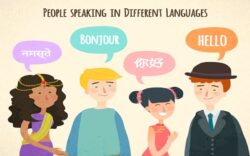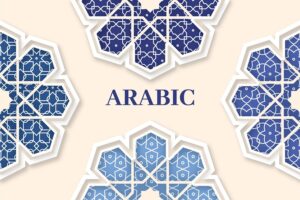Translating content
The Internet is a space without borders. It allows people to connect and discover new things and new products in other parts of the world, read about other cultures and habits. In contrast to high street locations, the products listed on an on-line page or shop can easily be offered across the globe and be seen by many audiences; however, and in order to address people in different countries, it is advisable to use their respective national language. English language is the most widely spoken language in the world and it is understood by the majority of the world’s population. Hence, most people are happy if everything they can see and read on the internet is written in their mother tongue. Content translation is the method of translating a content into different languages according to the audience. This kind of translation acts as a solid bridge to create a bond with the content producer and the audience.
A content could be translated to educate, engage, and, ultimately, share knowledge with a community of people, be it for business use, social or research—e.g., blog posts, white papers, videos, pod casts, etc.— Translating a content is attuning content to a specific audience that speaks a different language or is located in another geographical area. That means retaining the intended effect it had in its original language, then ensuring it continues to compel foreign audiences in their respective languages.
Why Content Translation Matters
Translated content is how you attract people to the front door of a business, and it’s what makes them want to remain around. Translated content helps build credibility, trust, and authority. For businesses looking to expand internationally, this is especially important because it can help them cross cultural divides to reach customers they otherwise couldn’t.
The right translated content can attract new prospects through search engines, social channels, email campaigns—and even from referrals from existing customers! It can also retain your current customer base by strengthening their experience on your site and building your reputation as an expert in the industry. Aside from breaking down language barriers, content translation can also help improve your chances of appearing on the first page of search engines. The content ranking makes it easy to be found, ensures that multiple audiences who speak different languages can easily access your site’s content from anywhere in the world using organic search. Search engines give preference to websites that offer content in multiple languages. A multi-language website can drive more traffic to the main website and create a positive compound SEO ranking effect.
Content Translation Methods
The most feasible way to translate content is human-only translation. Machine translation is another method to translate content. It is cost cost-efficient, improved productivity, but it is not as accurate as is a human translator. Machine translation is effective in translating short technical texts and short description, but it is still far to replace human translators. Machine translation quality has been refined lately when translation researchers implemented neural networks techniques. Translation has become more accurate, but it is still in need of a human being review. There is another method of translation content that is of combining content management system (CMS) and the translation platform plug-in in the process. Wagtail for example is a method to translate web content. It helps content engineers create virtual copies of the source texts then highlight the content segments that need to be translated. This method is an effective way of doing web content translation. It fast, cost efficient and avoid engineers spending more time extracting, transforming and loading the content again. Below is an extract of how to build a virtual environment with python and start the translation process.
Wagtail is an open source content management system (CMS) written in Python1 It is popular amongst websites using the Django web framework2. Wagtail Github repository contains all codes necessary to start building and translating a web content page. To start translating a web content with Wagtail, a virtual environment is necessary thing. A Virtual environment is a copy. It preventing libraries overlapping and allow the developer to download the dependencies they need for their project while they live the original Python package aside. The YouTube video is showing a step by step how to build a virtual environment in Python, download the libraries needed for building and translating a website content in Python using Wagtail content management system (CMS).
Lexsense create and deliver content translation
Content translation is a key factor for search engines. It can help involved entities be at reach by new customers. When a content is translated to different languages, search engines algorithms can locate the content and rank it for readers, Lexsense is offering content translation services for marketing, technical and research projects. We can work on the translation of your content and ensure that your website translation is accurate, and content is optimised for global search engines.
Our knowledge base is a source of information for our customers and followers. The terminology knowledge graph is built in three languages: Arabic, English and French. This is for the purpose of resolving interoperability issues and connecting the highly used languages in terms of the users amount people to each other. We’re a partner that can take you from planning to execution through our services, technology, consulting, and industry expertise. Our tailor-made solutions can help you reach these new markets quickly, efficiently, effectively, and in a way that maximizes gains for your business.
“Django Packages – CMS”. Retrieved 2016-03-01 ↩︎
“Wagtail: Python Package Index”. . Retrieved 2016-07-09 ↩︎


















